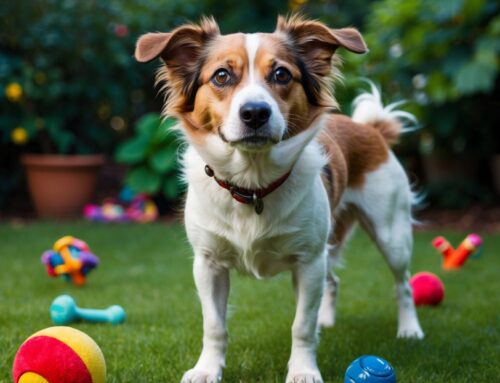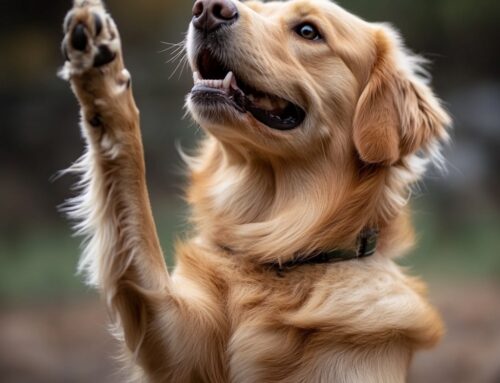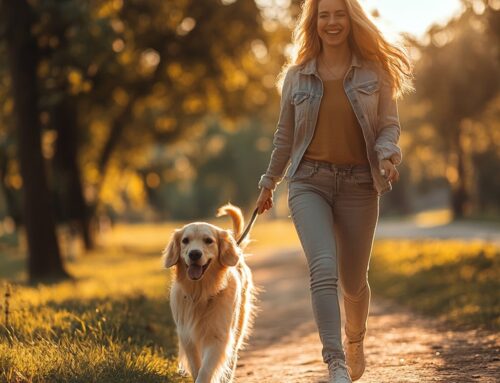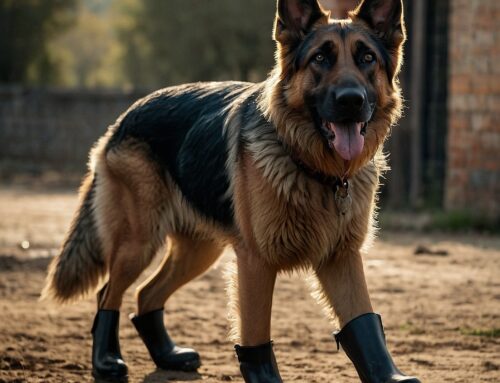Even before humans learn to speak, we’re able to express our emotions and desires through body language. As a species, we’re instinctively capable of reading and decoding this non-verbal communication long before we’re able to converse using speech. But humans aren’t the only animals that communicate using their bodies; virtually all animals do it — it’s just a question of being able to identify and parse individual movements and gestures to know what creatures are feeling and what they intend.
Below are some of the body parts and actions of a dog that you can observe, with telltale signs that will tell you how they’re feeling and if they have specific desires. Once you learn to recognize these signs, you’ll be able to understand your dog much better and communicate with them more effectively.
Stance
How a dog stands can tell you a lot about how confident they are, and whether they’re calm, excited or aroused. Dogs may only stand still for a moment, so concentrate a bit, and try to get a good look at their posture and how they bear their weight.
Are your dog’s feet in a perfect rectangle, and is their weight balanced between all four of their paws? These are signs of calm and confidence. Dogs that stand off-balance (with more weight on their front legs or their hind legs) may still be confident, but are likely excited and ready to play or interact.
Some dogs stand in a manner that hints at how or where they want to move next. Does it look like your dog is ready to dart in one direction or another? This is often a sign of fear, so you should try to determine what’s frightening your dog if you see this. Don’t try to force a dog that’s fearful closer to what’s making them afraid.
Approaches
How does a dog approach a person or another animal? Do they walk in a straight line, or do they approach via a curved path?
A dog approaching in a straight line is much more likely to be aggressive. Dogs that are in their adolescence may try out this behavior to see what being assertive feels like. If this is unwelcome behavior (particularly from a dog that’s not yours), you can try standing still, yawning or looking down at the ground in response to the dog’s movement as a way to diffuse the situation.
By contrast, a dog approaching on a curved path is more likely to be friendly, even if they’re moving at a high rate of speed (in this case, you can bend your knees, in case the dog is large and collides with you by accident).
Running
How does your dog run? Do they bound like a child’s rocking horse, moving vertically almost as much as they do horizontally? This typically means they’re being playful, although they may not realize their play is rough, and you might want to take care if they’re running at you so you aren’t bowled over in case of a collision.
On the other hand, a dog that’s running in a flat, efficient style — where there’s very little vertical movement — is in a hurry, and they may either be running away from a threat or toward a distant target or goal.
Eyes
Much of a dog’s mental state can be seen in their eyes, just as with humans. Eyes that are relaxed and almond-shaped reflect a calm demeanor, while large, rounded eyes can indicate surprise and arousal.
Are you able to see a significant amount of the whites of a dog’s eyes? If so, this indicates tension, and the dog in question may be upset or even want to bite, so be careful!
Mouths
Along with its eyes, a dog’s mouth can tell you much about its disposition. Loose lips and tongues can counteract the sounds a dog is making, so even if your dog is growling or whining, if its lips are loose and its tongue is hanging out, these sounds are meant to be playful, and should be treated as such. But if a dog opens its mouth and pulls its tongue and lips back, exposing its teeth, watch out — these are signs that a dog is wanting to bite!
Tails
Dogs use their tails in the same way that people use their smiles. But bear in mind that a wagging tail doesn’t necessarily indicate happiness — just as a human smile doesn’t always translate to serenity.
Examine the height of their tail, not just the movement. A nervous dog may keep its tail moving back and forth but low or close to the ground, similar to the way a person may laugh nervously. If a dog’s tail is high in the air as it wags, this is usually a sign of confidence, just as someone may smile when they’re feeling positive or pleased. A tail wagging quickly at a middle level can be comparable to the excitement a child radiates as they’re waiting for a relative to appear at an airport arrival gate.
In general, when looking at a dog’s tail, pay attention to the base, rather than the tip. A tail that’s tucked downward covering the genitals almost always indicates extreme fear.
Ears
Dogs’ ears can move independently from one another and are capable of rotating almost 180 degrees. Generally speaking, the more forward a dog’s ears are held, the more confident the dog is feeling, whereas the further back and pinned to the head or neck the ears are, the more likely it is the dog is feeling fear.
But bear in mind that a dog’s ears aren’t just used for communication; they’re also used as humans use ears — for hearing. Very often, when a dog hears a noise that piques its curiosity or that it perceives as important, it will move its ears into a better position to listen to the sound. As with the tail, the base of a dog’s ear is more important to observe than the tip.
Other Signs
In general, a dog’s moods can be seen via a combination of other signs:
- Relaxed and Approachable — A relaxed dog will hold its head high and its ears up. Its tail and tongue will usually be hanging down loosely.
- Alert — An alert dog will have a smooth forehead and nose, a closed mouth, a horizontal tail and a stance that leans forward a bit.
- Aggressive — An aggressive or dominant dog will have a wrinkled nose or forehead, visible teeth, tense legs and a stiff, raised and/or bristled tail.
- Fearful — A dog that’s fearful will lower its body, dilate its pupils and raise its hackles (the hair on its back and neck).
- Stressed — A stressed or distressed dog may be rapidly panting, sweating through its paw pads and/or have its body and tail lowered close to the ground.
- Worried — A dog that’s worried may raise one of its paws, lick at the air or at another dog nearby, make brief or indirect eye contact and possibly leave sweaty footprints behind.
By observing dogs’ body language, you should be able to pick up on their intentions, sense how they perceive their environment and tell how they feel about your actions. Like other animals’ (and humans’), dogs’ body language doesn’t lie.
Just as we can read dogs’ bodies, they’re also scanning our own for signals and communication. The better you can learn to understand what your dog is saying, the more responsive you can be to their needs. This will help your dog gain in confidence, improving and expanding the relationship you have with them.








